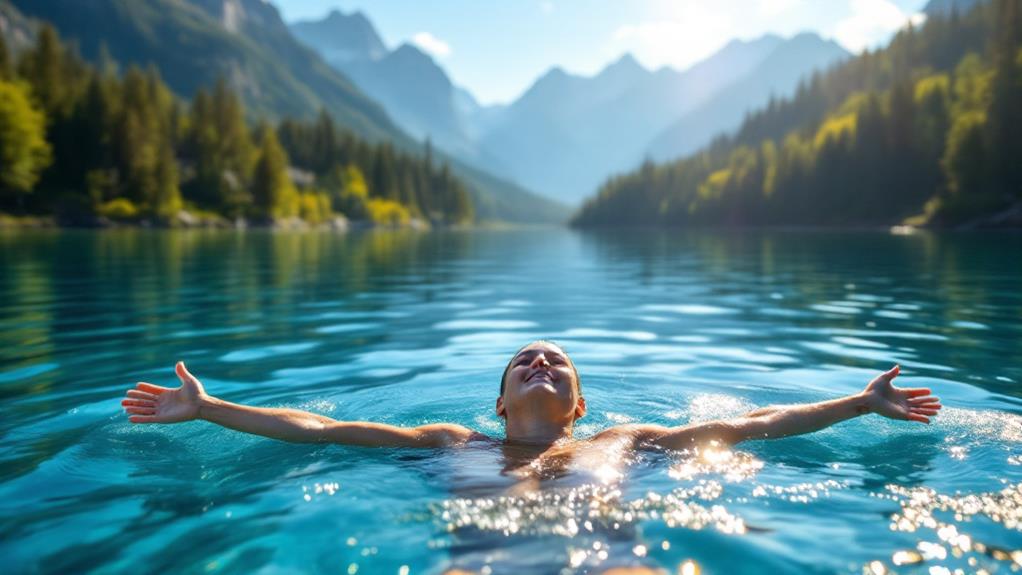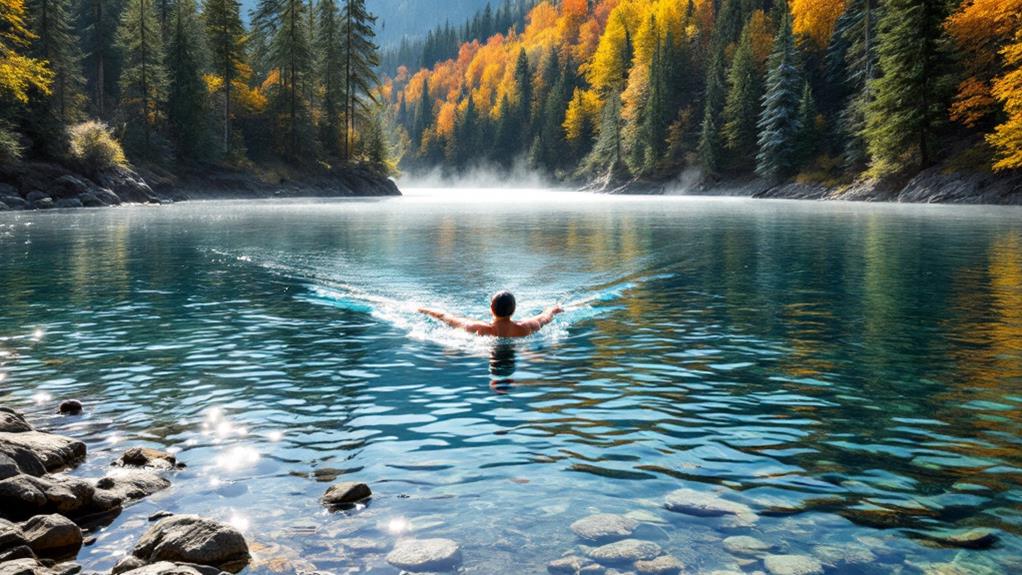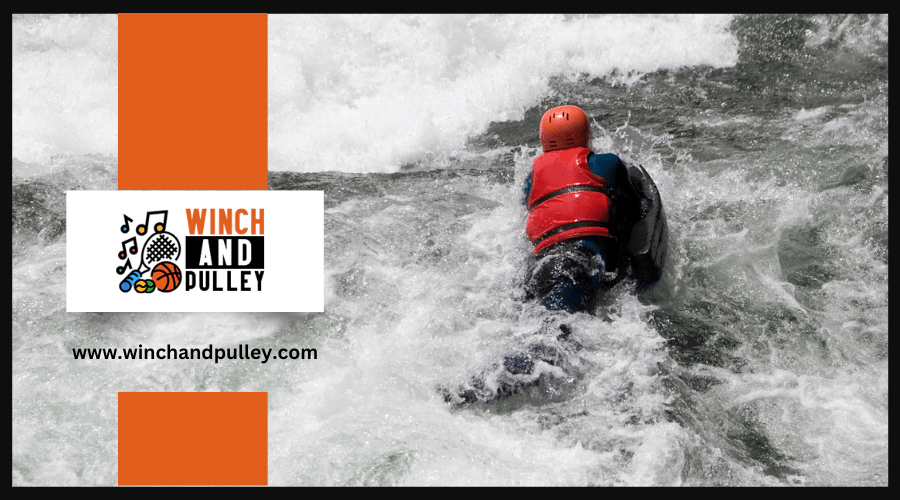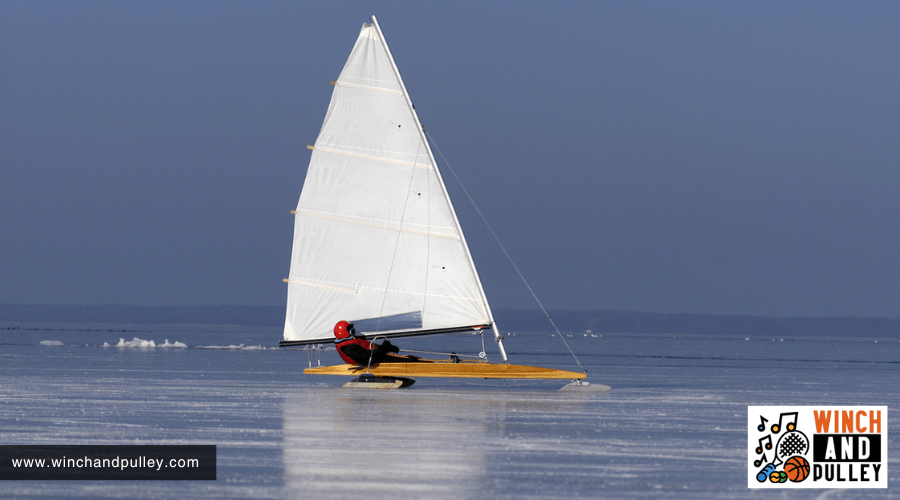Ice Swimming: Swimming in Frozen Lakes and Rivers
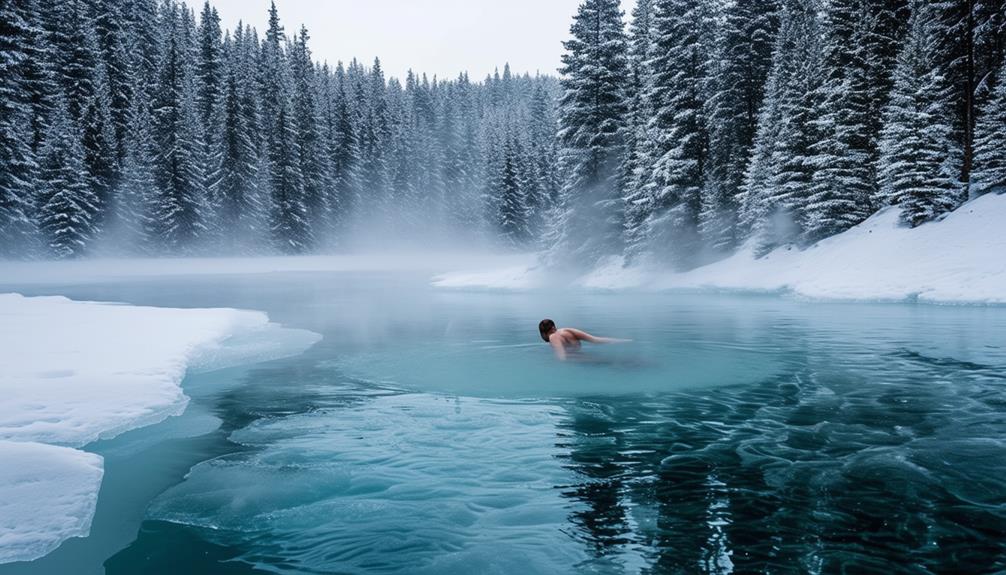
Imagine plunging into a frozen lake, the icy water enveloping you as you push your limits and test your resilience. Ice swimming, a practice deeply rooted in countries like Russia and Finland, offers both physical benefits and a profound sense of mental strength.
Preparing for such an extreme activity involves understanding the physical and psychological demands it imposes. The motivations driving individuals to embrace the cold vary, but many find a unique sense of accomplishment and connection with nature.
This ancient tradition holds more complexities than one might expect, and delving into its details can transform your perspective on challenging yourself in extreme environments.
Key Takeaways
- Ice swimming is a traditional activity in Russia and Finland, symbolizing bravery and endurance.
- Cold water immersion can enhance the immune system, improve cardiovascular health, and build mental resilience.
- Essential gear includes a high-quality wetsuit, neoprene accessories, goggles, and safety equipment.
- It is crucial to warm up before swimming, avoid going alone, and limit exposure time to prevent hypothermia.
- Expert Josef Köberl provides guidance on safety, acclimatization, and the proper gear for ice swimming.
History of Ice Swimming
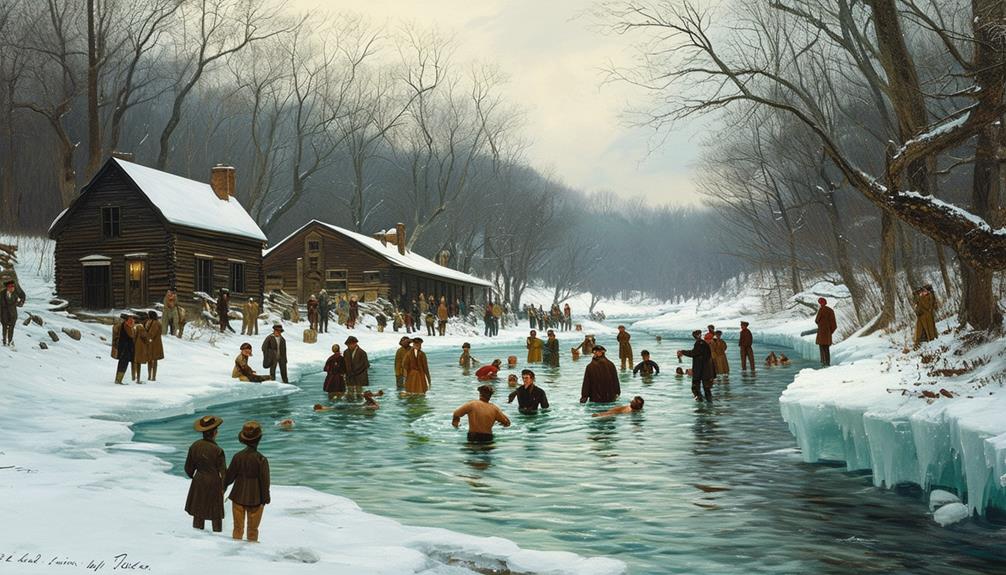
For centuries, ice swimming has been a symbol of bravery and cultural tradition in countries like Russia and Finland. This activity is more than just a swim in freezing waters; it's deeply rooted in cultural rituals. Historically, ice swimming in these regions has served as a way to showcase one's courage and endurance in harsh winter environments.
Imagine plunging into icy waters, not merely for sport, but as a rite of passage or a test of your mettle.
In Russia, ice swimming is often associated with the Epiphany celebration, where participants take a dip in frozen lakes to cleanse their sins and demonstrate their faith. Similarly, in Finland, winter swimming clubs have long been integral to local communities, providing a social and cultural outlet during the cold months.
Today, ice swimming has evolved into organized competitions worldwide, attracting both athletes and recreational swimmers. Despite its modern transformation, the essence of the activity remains a powerful display of physical and mental resilience.
When you see someone plunge into freezing water, you're witnessing a centuries-old practice of bravery and cultural significance.
Health Benefits
Diving into icy waters not only challenges your courage but also offers a multitude of health benefits. Immersing yourself in cold water can significantly boost your immune system by increasing white blood cell production, enhancing your body's ability to fend off infections.
Cold water swimming stimulates blood circulation, thereby promoting cardiovascular health. As your body strives to maintain its core temperature, your heart works harder, improving blood flow and oxygen delivery throughout your body. This increased activity can lead to higher energy levels and may aid in fat loss due to increased calorie expenditure.
Furthermore, ice swimming serves as a natural stress response training. It helps lower stress levels and enhances mental resilience, equipping you to better manage life's challenges. Over time, you'll develop a greater tolerance to cold, improving your ability to endure extreme conditions.
Here's a quick summary of the health benefits:
| Health Benefit | Description | Result |
|---|---|---|
| Immune System Improvement | Increased white blood cell production | Enhanced infection resistance |
| Cardiovascular Health | Improved blood circulation and heart function | Better cardiovascular performance |
| Stress Reduction | Natural stress response training | Reduced stress levels, increased resilience |
| Energy and Fat Loss | Higher calorie expenditure | Increased energy, potential fat loss |
Embrace the cold and enjoy these significant health benefits!
Essential Gear

When preparing for ice swimming, it's crucial to equip yourself with the right gear to ensure safety and comfort in frigid waters. The cold water can be harsh, and a high-quality wetsuit is essential to provide warmth and buoyancy, acting as your primary shield against icy temperatures.
To protect your extremities, consider wearing neoprene caps, gloves, and booties. Neoprene caps help retain body heat and prevent significant heat loss through your head. Gloves and booties made from neoprene will keep your hands and feet insulated.
Goggles with UV protection are also important. They improve underwater visibility and shield your eyes from the sun's glare reflecting off the ice.
Lastly, don't overlook safety equipment like a Restube buoy. This device offers added security, providing peace of mind and a quick means of flotation in case of emergencies.
With the right gear, you can enjoy ice swimming while staying safe and comfortable.
Safety Tips
Ensuring your safety during ice swimming is paramount. Begin by warming up your body before entering the cold water to prevent shock and help acclimatize your system. Gradually exposing yourself to lower temperatures is crucial, especially for beginners, to avoid hypothermia.
Never swim alone; always have a buddy or join a group. This is essential for your safety. If something goes wrong, having someone there could make all the difference. Additionally, limit your time in the cold water, as even a few minutes too long can lead to hypothermia or other cold-related injuries.
Consider using additional safety equipment like a Restube, which provides buoyancy and an extra layer of security, making your swim safer and more enjoyable.
Practicing the Wim Hof Method, which involves specific breathing techniques and cold exposure, can also help enhance your resilience and stimulate white blood cells, improving your immune response.
Expert Advice
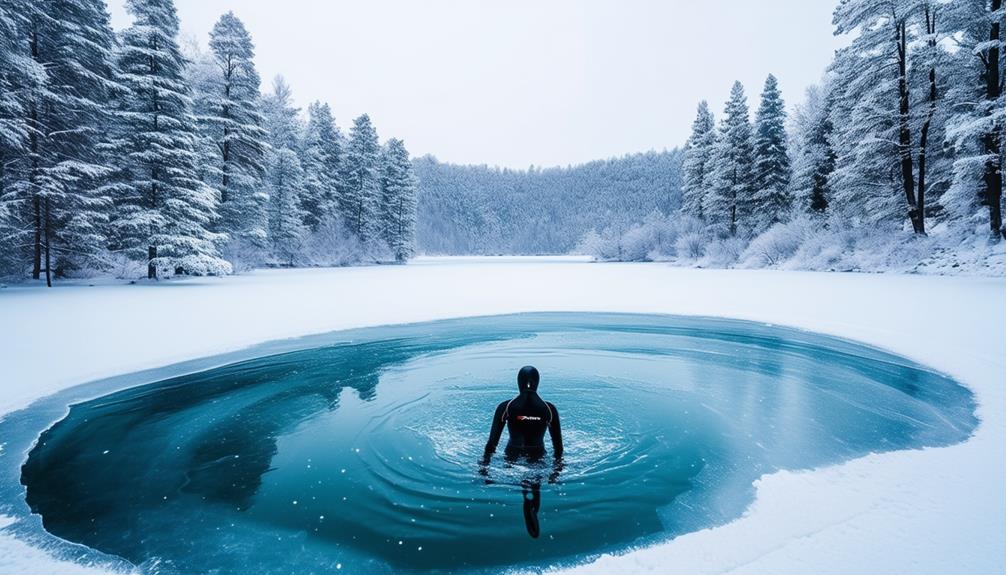
To master ice swimming, consider seeking guidance from experts like Josef Köberl, a record-breaking ice swimmer. His extensive experience can help you navigate the challenges of swimming in frozen lakes and rivers.
Josef Köberl offers courses and training sessions specifically designed for ice swimming enthusiasts. These sessions cover crucial topics:
- Safety Measures: Learn how to stay safe in freezing waters, recognize signs of hypothermia, and know when to exit the water.
- Cold Water Acclimatization: Develop techniques to acclimatize your body to cold temperatures, reducing shock and improving endurance.
- Proper Gear: Understand the importance of wearing the right gear, from wetsuits to gloves, to ensure your comfort and safety.
By participating in Josef's training, you'll gain the skills and confidence needed for ice swimming. His sessions are tailored to help you build your abilities step-by-step, providing practical advice and hands-on experience.
Follow Josef Köberl on Instagram for updates on ice swimming events, training opportunities, and valuable tips. Taking these steps will greatly improve your ice swimming experience, making it safer and more enjoyable.
Frequently Asked Questions
Is It Safe to Swim in a Frozen Lake?
Swimming in a frozen lake can be safe if proper precautions are taken. Ensure the ice is at least 4 inches thick and avoid areas with thin ice. Wear appropriate thermal gear, swim with a buddy, and have safety equipment on hand.
What Does Cold Water Swimming Do to Your Body?
Cold water swimming boosts your immune system by increasing the production of white blood cells, releases endorphins to enhance mental well-being, improves circulation for better cardiovascular health, and strengthens stress management by training your body's natural stress responses.
How Long Can You Swim in Freezing Water?
You can swim in freezing water for a few minutes to about 30 minutes, depending on your tolerance and acclimatization. Competitive ice swimmers may last longer, but it's crucial to prioritize safety and gradually build your endurance. Always consult with a medical professional before attempting such activities.
Conclusion
You've explored the fascinating world of ice swimming, understanding its rich history and the numerous health benefits it provides. By equipping yourself with the necessary gear and adhering to essential safety guidelines, you can safely enjoy the thrill of swimming in frozen lakes and rivers.
Remember, expert advice is invaluable, so don't hesitate to seek guidance from seasoned ice swimmers. Embrace the cold, challenge your limits, and join a community that celebrates bravery and endurance.

